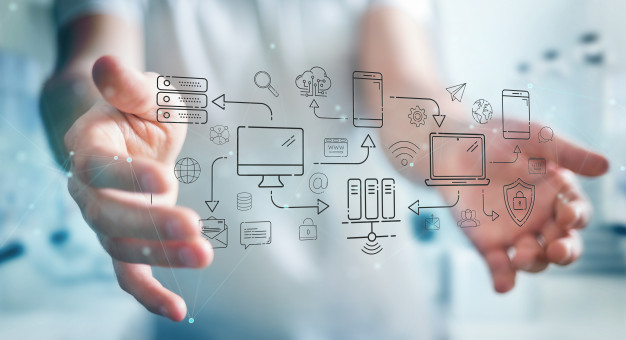Web 3.0 and its Impact
Audio : Listen to This Blog.
To understand what Web 3.0 and its impact is, let us begin with a throwback of how different the web was and where it is today. To begin with, Web 2.0 was characterized by the ability of users to share information quickly with others. This has been developed through a phenomenon we all love to call as the social media. From Twitter to Facebook to YouTube and every other social media community that people are familiar with, Web 2.0 is all about sharing and seeing.
Before Web 2.0, there existed Web 1.0, if you recall, information was put up on website and the closest definition of sharing and seeing at that point of time was through e-mails. Looking from where we stand today, Web 1.0 had very little communication and if one wanted information we
had to go source it.
Thus, day after day, the amount of information available on the internet grows exponentially. New sites, new images are constantly coming up and with this huge data, a major challenge is how to extract what is relevant to our routine activities.
Adding machine intelligence
Web 2.0 focused majorly on users interaction, thus, Web 3.0 emerged to be the focus on the users themselves. Referred to as the “semantic web” by experts, Web 3.0 is data driven. The data will come from the users and the website would adjust according to the needs of the user.
For example, imagine a family of 4 which includes a mother, father and two sons. The two brothers can organize logistics to support their mother’s health treatment. Using machine intelligence, they are enabled to take care of the planning and execution of the process automatically which includes interacting with clinical systems, among themselves and with their home devices.
It’s all about personalization
Web 3.0 focuses on the users rather than user’s interaction. Personalization is achieved by integrating real-time data through different platforms. Semantic technology aims at creating a meaningful around human interaction and human interests. This version will enable better online matchmaking and content distribution. It also allows better control of online privacy through smart distribution.
Web 3.0 is the most beneficial for marketers along with the consumers. They gain the advantage to provide more efficient strategy through integrated intelligent data. Content will be produced to the clients/consumers through the most relevant layer. Several companies now focus more around increasing Ad relevance through intelligent data. A lot of them provide data based on the content and structure of web pages for the purpose of improving the relevance and effectiveness of online display advertising.
The big data
Most companies and large enterprises spend and depend more on big data. For example, take an organization ‘X’, the sales and marketing department of the organization collect customer data at every touch point with the customers across different channels. These channels range from phone conversations to online forms, face-to-face conversations etc.
This company stores all this data on the customer relationship management tool (CRM). For ‘X’ it is essential for them to have information of their past customers, current customers and potential customers, especially the history of their interactions.
Thus, the information available about the buying behavior of the customers across multiple channels constitutes the real opportunity to engage audience in different ways, driving revenue at the right time.
Mobile Web 3.0
Web 3.0’s greatest impact would be the increasing popularity of the mobile devices and the merger of entertainment and the web. Mobile Web 3.0 has elements that are distinct from what was existent previously. With the mobile web 3.0 user experience opens doors for another level of advertising and promotions, thus providing a whole new level of commerce opportunities for potential advertisers.
Web 3.0 design
We all know that Web 2.0 design aimed at drawing attention and persuading your audience. Web 2.0 made a huge deal about being able to purchase things online. It wanted to generate excitement and get people to make a purchase and understand what they were doing.
With the growth in the usage of smart phones and tablets, people want more usage out of their items and to be able to access more things as best as possible. A consequence of Web 3.0 would be that, design will have to be able to translate in great quality across all sorts of technologies. Also
for Web 3.0, designers will continue to focus on making things simpler.
This era is interesting because web has begun to bring more knowledge and action capacity for its users, thus resulting in considerable changes in several aspects of day life. Web 3.0, in conclusion, is moving towards a more dynamic environment where the democratization of the capacity of
action and knowledge can speed up the business in almost areas today.



